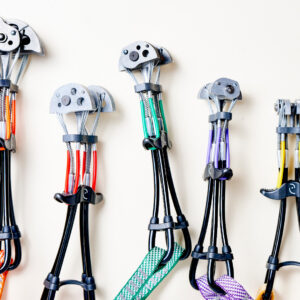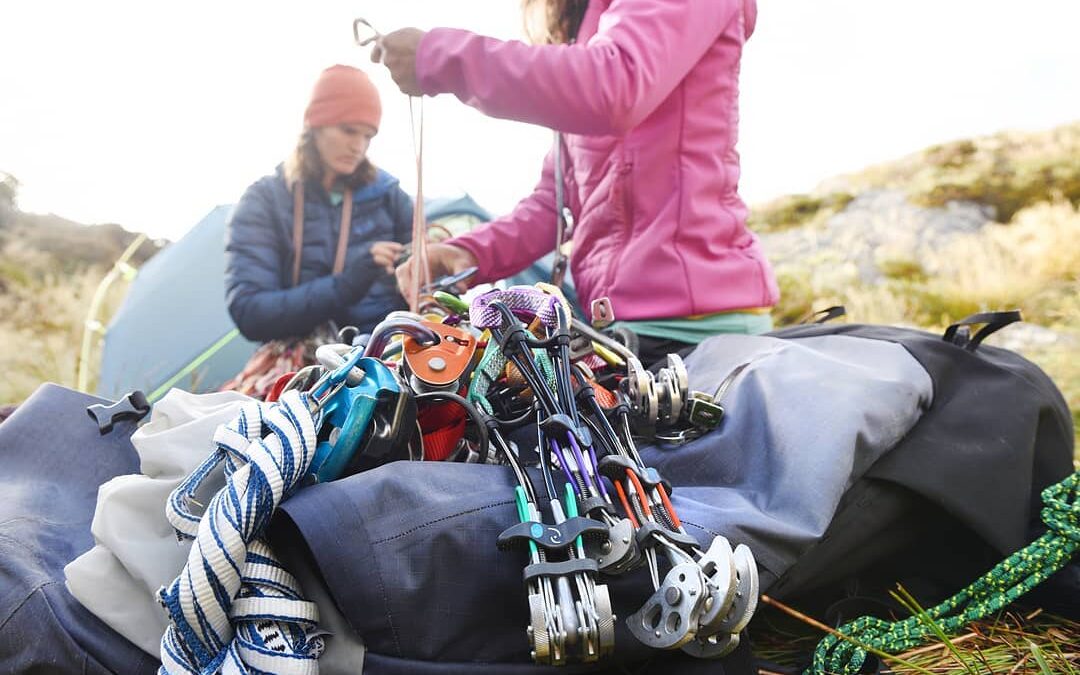 The Ultimate Guide to Choosing the Right Rock Climbing Cams
The Ultimate Guide to Choosing the Right Rock Climbing Cams
If you’re getting into trad climbing, one of the biggest investments you’ll make is your trad rack—and at the heart of it are your cams. But with so many options out there, how do you know which cams to buy?
✅ Do you need single or double axles?
✅ What sizes are best for your local crag?
✅ Why are Totem Cams a top choice for many climbers?
If you’ve ever felt overwhelmed staring at a gear shop wall full of cams, don’t worry—you’re not alone! This guide will break down how to choose the right rock climbing cams for your next trad climbing adventure, whether you’re tackling granite cracks in Yosemite or limestone pockets in the Red River Gorge.
1. Understanding Cam Basics: How They Work & Why You Need Them
What Are Cams?
Cams, or spring-loaded camming devices (SLCDs), are active protection devices used in trad climbing. Unlike passive gear like nuts, cams use a spring-loaded mechanism to expand and grip the inside of a crack, providing secure protection.
Single vs. Double Axle Cams
- Single Axle Cams: Lighter, but have a smaller expansion range.
- Double Axle Cams (e.g., Black Diamond Camalots): Offer a wider range but are slightly heavier.
- Totem Cams (Unique Design!): Use a Direct Loading System, allowing more secure placements in tricky cracks and pin scars.
Pro Tip: Totem Cams don’t use a standard single or double axle design, which allows them to grip better in marginal placements and work where other cams fail.
 2. Choosing the Right Cam Sizes for Your Rack
2. Choosing the Right Cam Sizes for Your Rack
One of the most common questions trad climbers ask:
“What cam sizes do I need?”
Essential Rock Climbing Cams Sizes for a Beginner Trad Rack
Most trad racks include cams ranging from small (fingertip cracks) to large (fist cracks). Here’s a basic size guide using Totem Cams:
| Cam Color | Crack Size | Best for |
|---|---|---|
| Black (Smallest) | 11.7-18.9mm | Tiny finger cracks, aid placements |
| Blue | 13.8-22.5mm | Thin fingers, small pin scars |
| Yellow | 17-27.7mm | Perfect finger-sized cracks |
| Purple | 20.9-34.2mm | Wide fingers, thin hands |
| Green | 25.7-42.3mm | Hand-sized cracks |
| Red (Largest) | 31.6-53.6mm | Wide hands, fist cracks |
Pro Tip:
- If you mostly climb granite, prioritize finger-to-hand-sized cams (Blue, Yellow, Purple).
- If you climb desert sandstone (Indian Creek), you’ll need doubles in larger sizes (Green, Red).
3. How Many Rock Climbing Cams Do You Need?
For most single-pitch trad routes, a single set of cams (one of each size) is enough. But if you’re climbing longer routes or cracks that require the same size repeatedly, you’ll want doubles or triples in key sizes.
- Beginner rack (one set of cams): Ideal for easy trad routes with varied crack sizes.
- Double rack (two of each size): Needed for splitter cracks or sustained pitches.
- Aid climbing rack: Totem Cams shine here because they can hold on two lobes, making them great for pin scars and marginal placements.
Pro Tip: If you’re climbing a route with sustained hand-sized cracks, bring multiple Green and Red cams.
4. Comparing Totem Cams to Other Popular Cams
While there are many great cam brands, Totem Cams offer unique advantages over traditional options like Black Diamond, DMM, or Wild Country.
| Feature | Totem Cams | Black Diamond Camalots | DMM Dragons |
|---|---|---|---|
| Lobe Engagement | Direct Loading System (More grip) | Axle-based force distribution | Axle-based force distribution |
| Narrow Head Width | ✅ Yes | ❌ No | ❌ No |
| Flexible Stem | ✅ Yes (Less walking) | ❌ No | ✅ Yes |
| Two-Lobe Placements | ✅ Yes | ❌ No | ❌ No |
| Best For | Marginal placements, aid climbing, tricky cracks | All-around use, double axle range | Lightweight, aggressive camming angle |
Takeaway: If you climb a lot of granite, pin scars, or aid routes, Totem Cams will outperform traditional cams in sketchy placements.

Max Didier – Salathe
5. Special Considerations: Matching Cams to Your Climbing Style
Not all trad climbers need the same cams. Your choices should be based on where and how you climb:
- Granite Climbers (Yosemite, Squamish, The Needles) → Focus on narrower cams for pin scars and thin cracks (Totem Cams excel here).
- Desert Climbers (Indian Creek, Moab) → Need doubles in hand and fist sizes.
- Alpine Climbers (Rocky Mountains, Patagonia) → Look for lightweight cams (DMM Dragons are great, but Totems work well too).
- Sport-to-Trad Transition Climbers → Start with mid-sized cams (Purple, Green, Red) for easy-to-protect cracks.
Pro Tip: If you’re new to trad, borrow different brands before committing to one style—you’ll quickly see why many climbers swear by Totem Cams!
Final Thoughts: What’s the Best Cam for You?
Choosing the right rock climbing cams comes down to knowing your local rock type, your climbing style, and your budget.
- Totem Cams: Best for marginal placements, aid climbing, and narrow cracks.
- Black Diamond Camalots: A solid all-around choice for most climbers.
- DMM Dragons: Great for lightweight alpine racks.
If you’re serious about trad climbing, at least a few Totem Cams belong in your rack. Their ability to grip where other cams fail makes them an essential tool for any climber.
Next Steps: Build Your Trad Rack Today
📢 Ready to start building your cam collection? Browse our selection of Totem Cams and find the perfect size for your next adventure.
